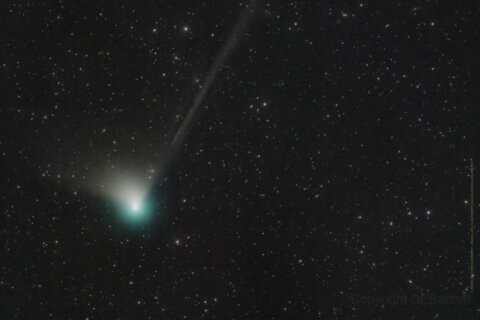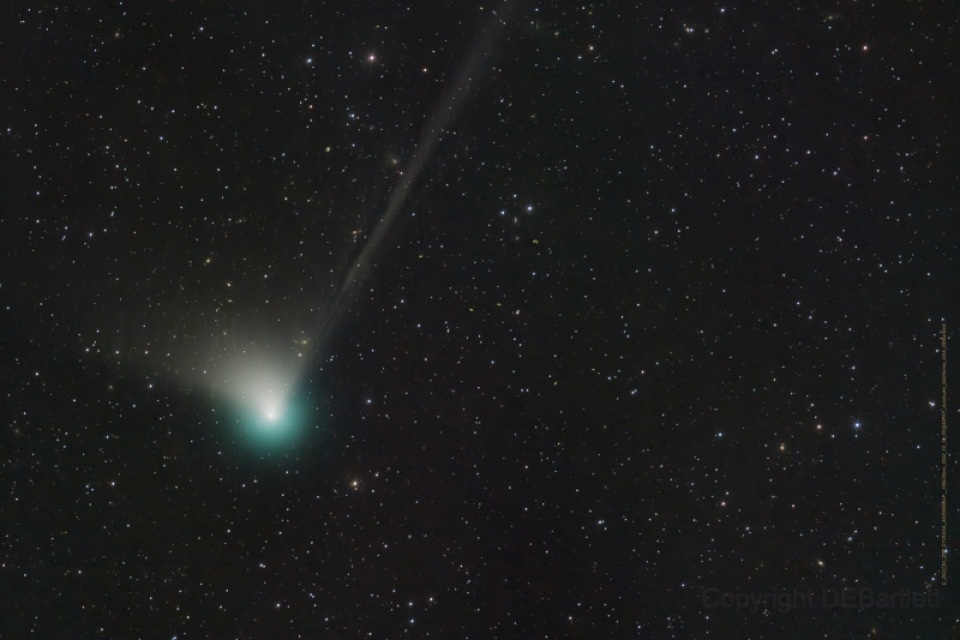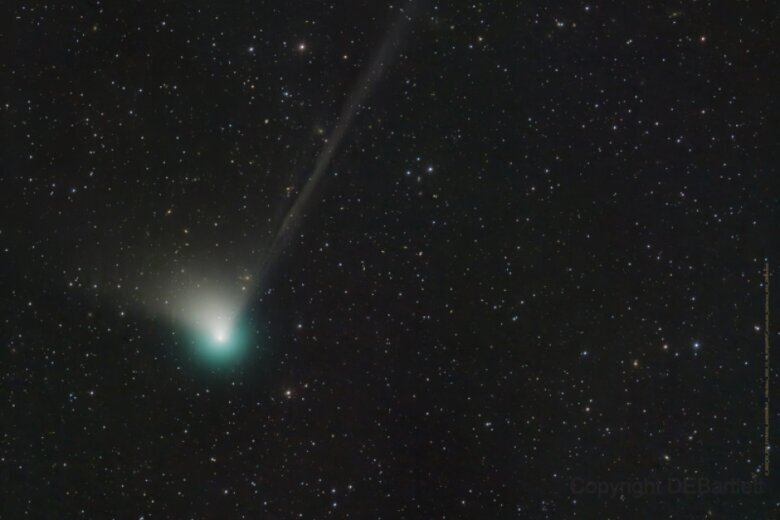
A green comet that hasn’t been seen since woolly mammoths and Neanderthals walked the Earth is passing by us this winter. Don’t miss your chance to see it.
Depending on the weather, early Tuesday morning might be your best viewing opportunity.
Michael Kelley, a research scientist at the University of Maryland’s Astronomy Department, told WTOP that the morning hours are when the comet appears highest in they sky. It will appear pretty close to the North Star. But if you are a night owl, then later in the week, evenings will be more favorable to view it.
Kelley said to pack binoculars, or a telescope if you have one, and head out of town where there is minimal light pollution. That will be the best chance to see the comet, depending on cloud cover.

“It’s really fun to see a comet for yourself if you have that opportunity. Hopefully, we’ll have some clear skies and everybody can give it a try,” said Kelley.
The green comet has not been near Earth for around 50,000 years. Its orbit takes it all the way to the Oort cloud, which is the very edge of our solar system.
“It’s fun to think about how old these objects are, how old the Earth is, how old all those parts of our solar system are,” Kelley said. “We’re just a small part of that.”
Right now, it is traveling about 90,000 miles per hour at about a third of the distance from the Earth to the sun. The moon is roughly a hundred times closer. But even so, Kelley told WTOP not many Oort cloud comets come this close, and this particular comet may never pass near Earth again.
“Every time these Oort cloud comets come to the inner solar system, the planets get a chance to push them around or pull on them with gravity. And this one, in particular, may never return again, there’s a small chance that it could be ejected from the solar system,” said Kelley.
Though you may not be able to see the greenish hue of the comet with the naked eye or even binoculars, amateur astronomers have captured dazzling images of its emerald glow.
Kelley likened a comet to a “big space snowball,” made up of dust and ice. The ice becomes gas, forming a cloud of gases around the comet, which is called a coma.
“This nice green color comes from gas around the comet,” Kelley said.









